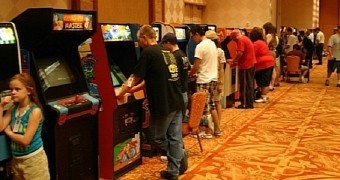The Videogame History Museum sounds like something that you would expect to see in an episode of "Futurama" or in some crazy paleofuturistic '50s montage, but it's as real as it gets, and you won't need a DeLorean in order to pay it a visit.
The museum has reportedly attempted to find a home for years, and it finally managed to find one at the Texas Discovery Center, where ample residences and a cool $1 million / €0.78 million are waiting for the vast collection to debut its first static incarnation.
The Videogame History Museum has finally found a home in Texas
The board of the Frisco Community Development Corporation decided to approve the sheltering of the museum, together with covering the startup costs and the construction of a larger facility, under the name of The National Videogame Museum.
"We're glad to finally have a home," said Sean Kelly, one of the founders of the enterprise, as quoted by Dalls News.
A capital campaign to raise money for a much bigger facility will debut in April, and The National Videogame History Museum would like to approach major industry players, including platform holders and major publisher, for donation to get things started.
By that time, the startup collection will be ready to admit visitors and start earning money from patrons, and more funds will be channeled to the development of the exhibit from the CDC and the Frisco Convention and Visitors Bureau.
For the time being, the museum will occupy an area of 10,400 square feet / 966 square meters.
Ambitious plans for the future
The museum's collection is immense, and has had a major presence at many video game conventions over the years, but the bulk of its goodies resides in storage all around the United States of America.
Now that the collection has found a home, its creators, John Hardie, Sean Kelly and Joe Santulli, hope to add plenty more interactivity to the entire affair, such as staging a workshop that would teach people the basic building blocks of game development, resulting in a brand new version of Pong.
Furthermore, the museum will also feature a large 1980s arcade section, where as many working cabinets as possible will be fitted, with the rest of the collection to be regularly rotated, until the bigger facilities can be built.
The primary purpose of the museum is education, regarding both industry history and the games themselves, with living examples from its decades-spanning portfolio being available for visitors to admire.

 14 DAY TRIAL //
14 DAY TRIAL //